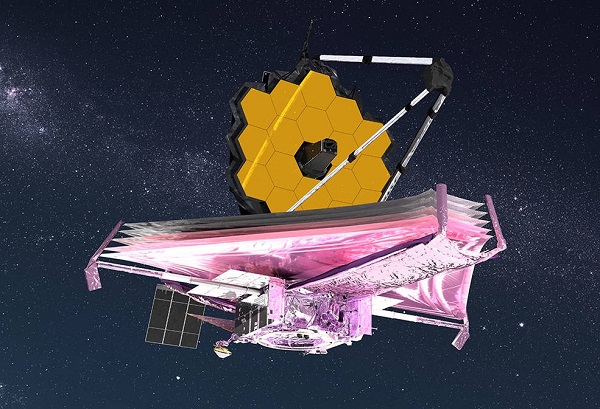
Washington, (Asian independent) An instrument onboard the James Webb Space Telescope has reached its final operating temperature – minus 266 degrees Celsius, NASA officials have said.
Along with three other instruments onboard Webb, Mid-Infrared Instrument (MIRI) – a joint development by NASA and ESA (European Space Agency) – initially cooled off in the shade of the telescope’s tennis-court-size sunshield, dropping to about minus 183 C. But it achieved the final target on April 7.
Low temperature is necessary because all four of Webb’s instruments detect infrared light – wavelengths slightly longer than those that human eyes can see. Distant galaxies, stars hidden in cocoons of dust, and planets outside our solar system all emit infrared light.
Cooling down the four instruments’ detectors and the surrounding hardware suppresses those infrared emissions. MIRI detects longer infrared wavelengths than the other three instruments, which means it needs to be even colder, the team said.
Another reason Webb’s detectors need to be cold is to suppress something called dark current, or electric current created by the vibration of atoms in the detectors themselves.
Dark current mimics a true signal in the detectors, giving the false impression that they have been hit by light from an external source. Those false signals can drown out the real signals astronomers want to find. Since temperature is a measurement of how fast the atoms in the detector are vibrating, reducing the temperature means less vibration, which in turn means less dark current.
MIRI’s ability to detect longer infrared wavelengths also makes it more sensitive to dark current, so it needs to be colder than the other instruments to fully remove that effect. For every degree the instrument temperature goes up, the dark current goes up by a factor of about 10.
Once MIRI reached a frigid minus 267 C, scientists began a series of checks to make sure the detectors were operating as expected.
“We spent years practising for that moment, running through the commands and the checks that we did on MIRI,” said Mike Ressler, project scientist for MIRI at JPL.
“It was kind of like a movie script: Everything we were supposed to do was written down and rehearsed. When the test data rolled in, I was ecstatic to see it looked exactly as expected and that we have a healthy instrument,” Ressler added.
There are still more challenges that the team will have to face before MIRI can start its scientific mission.
Now that the instrument is at operating temperature, team members will take test images of stars and other known objects that can be used for calibration and to check the instrument’s operations and functionality.
The team will conduct these preparations alongside calibration of the other three instruments, delivering Webb’s first science images this summer.
The James Webb Space Telescope is an international program led by NASA with its partners, ESA and the Canadian Space Agency.







